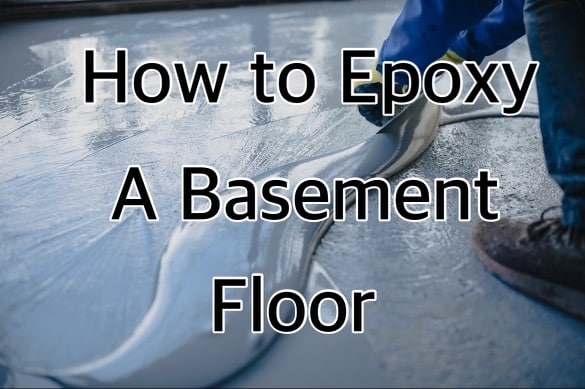
How to Epoxy a Basement Floor: The Decorative Enhancement with a Caveat
Epoxying a basement floor has grown in popularity as homeowners seek to upgrade their living spaces with decorative, durable finishes. Epoxy floor coatings provide a glossy or matte finish, can hide imperfections, and are often chosen for their ability to resist stains, chemicals, and wear. But while an epoxy floor is a great decorative choice, it’s essential to understand that merely applying epoxy doesn’t address the underlying need for basement waterproofing.
Understanding Epoxy and Basement Floors
Epoxy is essentially a resin, often combined with a hardener, to form a solid epoxy coating. When applied on concrete floors, particularly concrete basement floors, it creates a seamless finish, masking imperfections, and creating a visually appealing surface.

Why Choose Epoxy?
Durability:
Epoxy coatings can turn concrete basement floors into abrasion-resistant surfaces that can handle heavy foot traffic, skid marks, and more.
Appearance:
With options ranging from a glossy finish to a matte finish and the possibility to include colored flakes for a speckled pattern, the aesthetics are versatile.
Maintenance:
Epoxy floors are easy to clean. Spills can be wiped up, and regular cleaning only requires mild soap and water.
Mold Resistant:
For basements prone to dampness, epoxy’s mold-resistant properties are beneficial. It prevents mold spores from settling and growing on the floor of your basement.
DIY Epoxy Application
If you’re considering a DIY epoxy floor project, here are the basic steps:
Prepare the Concrete Floor:
Clean the floor using a mild detergent, and then etch the concrete using an etching solution to ensure the epoxy adheres properly.
Choose Your Epoxy:
Decide between water-based epoxy, which lacks hazardous solvent fumes, or a more durable solvent-based epoxy.
Application:
Start with a base coat, followed by a second coat if necessary. You can then apply a clear coat for added protection and aesthetics.
But What About Waterproofing?
Epoxy floors, though they seal the concrete surface, don’t necessarily provide comprehensive waterproofing. A beautiful epoxy basement floor might still let water seep through if the source of the moisture isn’t addressed. Here’s what to consider:

External Waterproofing:
Exterior basement waterproofing ensures the exterior of your basement has proper drainage.
Internal Waterproofing:
Address any internal sources of water or moisture before applying epoxy.
Crack Repair:
If there are cracks in the concrete, it’s imperative to fix them before applying epoxy.
Can Epoxy Substitute Basement Waterproofing?
While epoxy coatings can significantly beautify concrete floors, turning your basement into a more usable, aesthetically pleasing space, they are not a substitute for comprehensive basement waterproofing. It’s essential to ensure that your basement floor is dry and free from water seepage before starting your epoxy project. Remember, a beautiful floor is best enjoyed when it’s also dry and safe.
Call today to waterproof your basement!

